Too many cardboard boxes - not enough ideas?
- Play Ideas
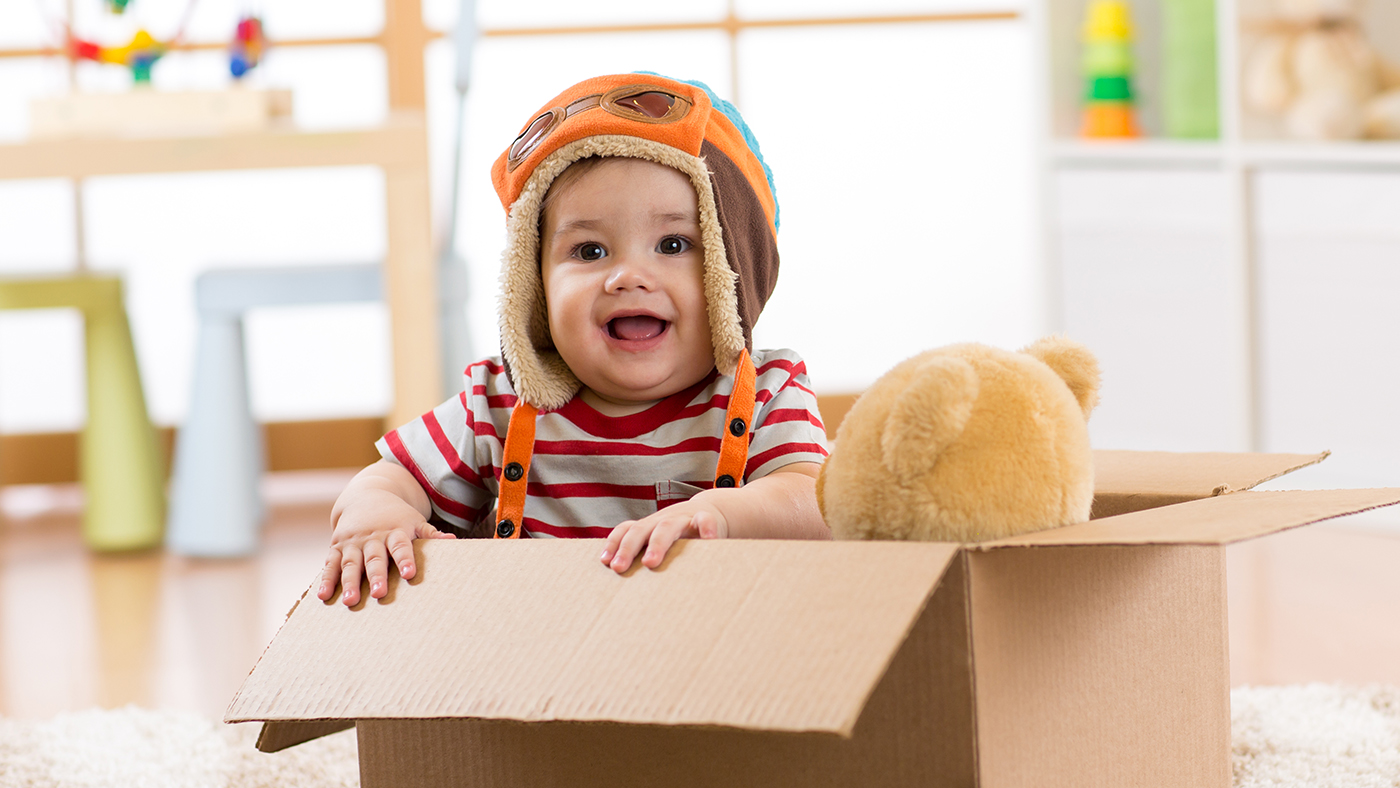
Cardboard boxes can be hugely exciting. Have you ever wondered why children can sometimes get more use out of a box than the content of the box?
Well, the simple answer is cardboard boxes provide a fabulous open-ended resource where your imagination is the limit as to what you can create with them. When a box is simply left out to explore, it can become all manner of imaginative spaces, you don’t always need an idea as the box will come to life all by itself.
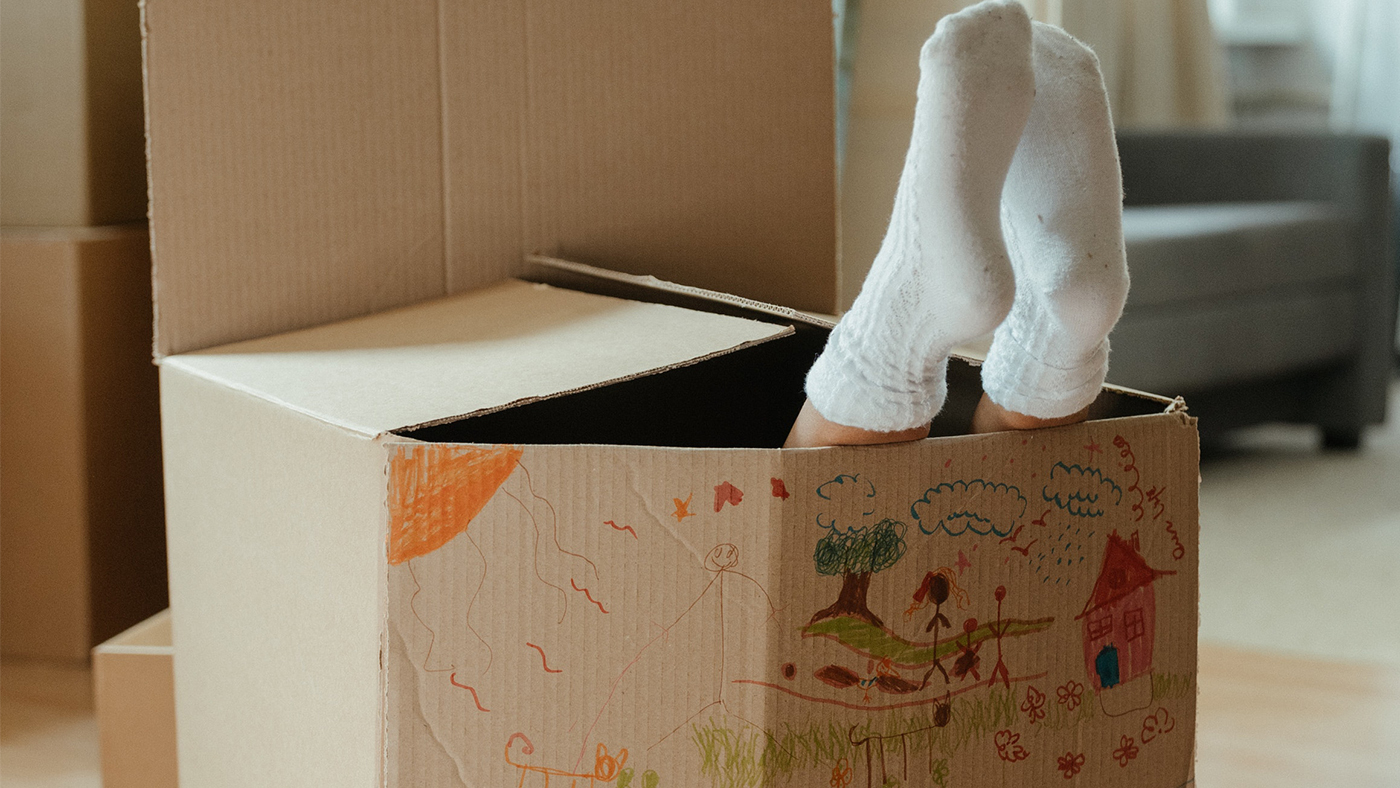
It is important to remember that children of all ages will LOVE ANYTHING that is made from a box or boxes! The aesthetic of the end result doesn't really matter, but the creative opportunities are endless. Usually, your children are the ones who have the best ideas and they will come up with amazing ideas. But just might need your help to implement them!
Keep on reading to find a few suggestions about what to do with a simple cardboard box for children of all ages.
Let’s think about babies
Boxes can be great for tummy time, especially for those who may not enjoy it so much. This idea may just help your baby to find out that tummy time is more fun than they thought. You will need to flatten a box and cut out a rectangle that your baby can lie on. Start by lying your baby on the flattened box on their tummy. You could lie on your tummy, facing them whilst they become familiar with the cardboard. When your baby feels comfortable, you can gently start moving the cardboard forward and backward. When they are used to the motion, the cardboard can be used to move around large areas of floor space.
You could use a box to create a sensory play surface. These are simple to create and may be built from any size box. These can be created out of flattened boxes or from a full box if your baby is able to sit up. Look for different fabrics around your home. For example, you might have bubble wrap, an old t-shirt, crinkly paper, recycled clean packets and photos of family members. You can use anything that is safe for your baby! Cut some shapes in your cardboard box and tape the materials to the back of the hole. There you go! You have a sensory surface or box for your baby. These sensory surfaces massively stimulate your baby's sight, hearing, touch, and proprioception.
If you have larger boxes, why not turn them into tunnels! These are fantastic for encouraging crawling and movement. You may take it a step further and use paints, crayons or fairy lights to embellish your tunnels.
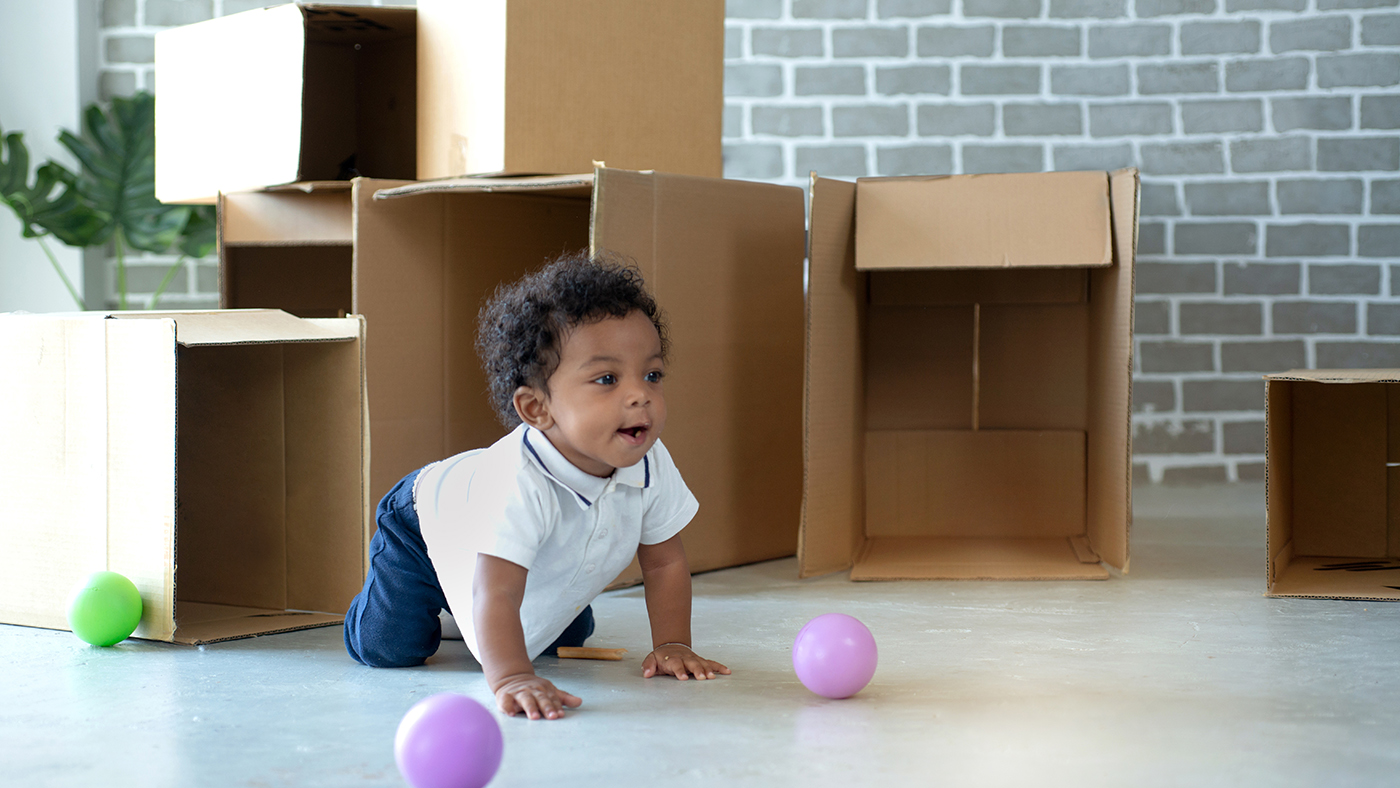
Memory box - Why not make a medium sized box into a memory box so that all your first memories are safely stored in one place? You have the freedom to design the box anyway you want.
Let’s think about toddlers
Boxes are super for imaginative play. Depending on the size of the box, it can be transformed into a variety of things that encourage imaginative play. You could make a car, an aeroplane, an oven, a castle, a robot, or even a television out of a box. Allow your imagination to go wild and enlist the help of your toddler when crafting them. They may have their own ideas, and you can collaborate to bring the fantasy to life.
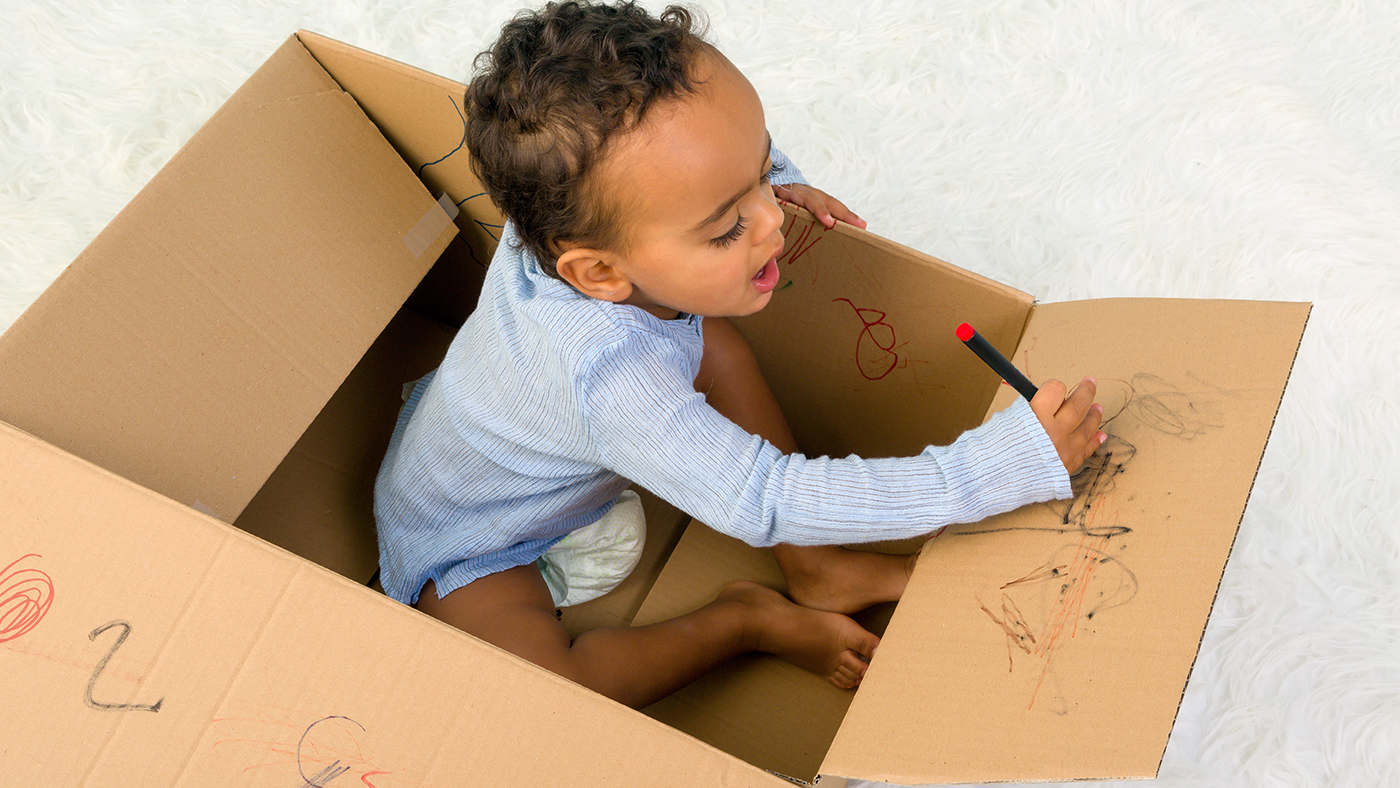
Hours of enjoyment can be had by hammering into crates. Real hammers are fine for your toddler to use, but they must always be supervised by an adult. The best part about this project is that the nails and screws may be reused over and over. Pencils, crayons, and golf tees are examples of other items that can be hammered into the box. When hammering, lots of motor skills are being developed and to hammer the nails in successfully, you will need both gross and fine motor abilities, as well as hand-eye coordination.
Children love themselves and cardboard boxes provide a great platform for a body awareness activity. If you find you have a large box, flatten it and ask your toddler to lie on it. Carefully draw around them, talking about their body parts as your draw. Once you have your body template, cut it out. You and your toddler can talk more about their body and draw features onto their cut-out self. Encourage them to think about facial features, hair colour, clothing, shoes, accessories etc. You may find that your toddler wants to draw around you, their siblings, family members or their toys... let them go for it!
Great for children
All of the ideas for babies and toddlers are suitable for children but as their creativity and ideas grow and develop, you may discover that the level of detail in your crafts expands a little. Children love to engage in imaginative play and they will have plenty of ideas of what they want to make. You can put together multiple boxes to create dolls houses, rooms and scenes.
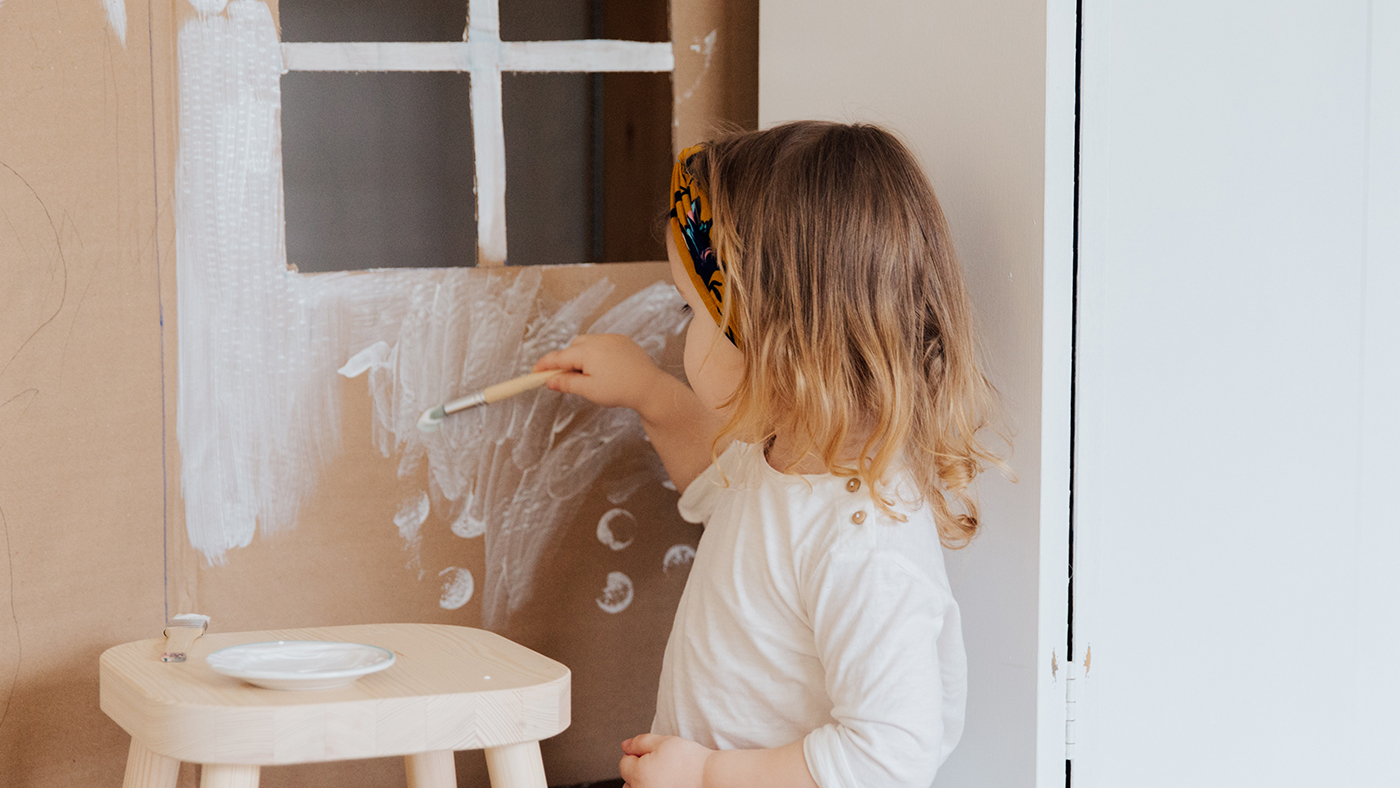
2D scenes can be made by flattening boxes, or partially flattening boxes. Once a box is flat, a vehicle track could be designed, a city landscape, a park, or a sports field. The possibilities are endless! Simply draw shapes and lines on the box and add colour using chalks, pens, crayons or paints. You can even add small world toys to bring your scene to life.
There are numerous games that could be played with boxes, depending on the number and size of the boxes. Why not build a tower that can be knocked down if you have a lot of them? If you cut out 10 cardboard squares and write or paint numbers on them, you have a game of hopscotch.
Target games are ideal for boxes. Boxes can remain whole, with one side open for kicking or throwing balls into. They could be flattened and used to create a variety of targets, such as different sized circles that start small in the centre and get larger as they move out. A scoreboard can be made by adding numbers to the circles. Targets for smaller balls, toy trains, or cars can be made using the entire box. Tunnels can be made by cutting out arches of varying sizes from the open side of the box. To get the ball, car, or train into the tunnels, your child can roll, kick, or use a stick. If you want to play a game, numbers can be placed above each tunnel, or if you are learning colours, each tunnel can be a distinct colour. You can even add letters for early reading practice.
Before we go
Here are a few suggestions for children of any age.
Instruments
Instruments are an amazing option for boxes. The simplest way to make a drum is to bang on it. Cutting a circle on the top of the box and putting numerous lengths of string above it can be used to make a guitar-style instrument. To make rattles, place dry grains, pasta, or beads inside smaller boxes. These need to be secured safely, especially when being used with younger children.
Paint is great for boxes. There needn’t even be a goal in mind when using paint, it can be slapped on purely for the fun it produces. Using toy cars or trains in paint create lovely marks, and printing can be achieved by using building blocks. Your child can even get inside a box and paint from within.
Imaginative ideas
Creating a theatre or puppet show is a perfect way to encourage both confident and less confident children to the stage.
Dark dens: If you have a box large enough for your child to sit in, make it into a dark den. This can be accomplished by painting the inside of the box with dark paint or covering it with material. Cushions, torches, teddies, and dangling ribbon from the roof are all ideas for the inside.
Nature boards: When you are out and about, you could take a small box with you to collect natural items in. Or you could cut a small square or rectangle and take some tape with you. Items can be stuck to the board as you enjoy the great outdoors
The only way to end this blog is with one last idea. When you have finally had enough of the box or boxes and it’s time for them to go, get the family involved by jumping on them to crush them. If the boxes are big, you may need to start this process off, but it will be fun the whole family so be sure to save some crushing for smaller members of the family. Then it is ready to recycle!